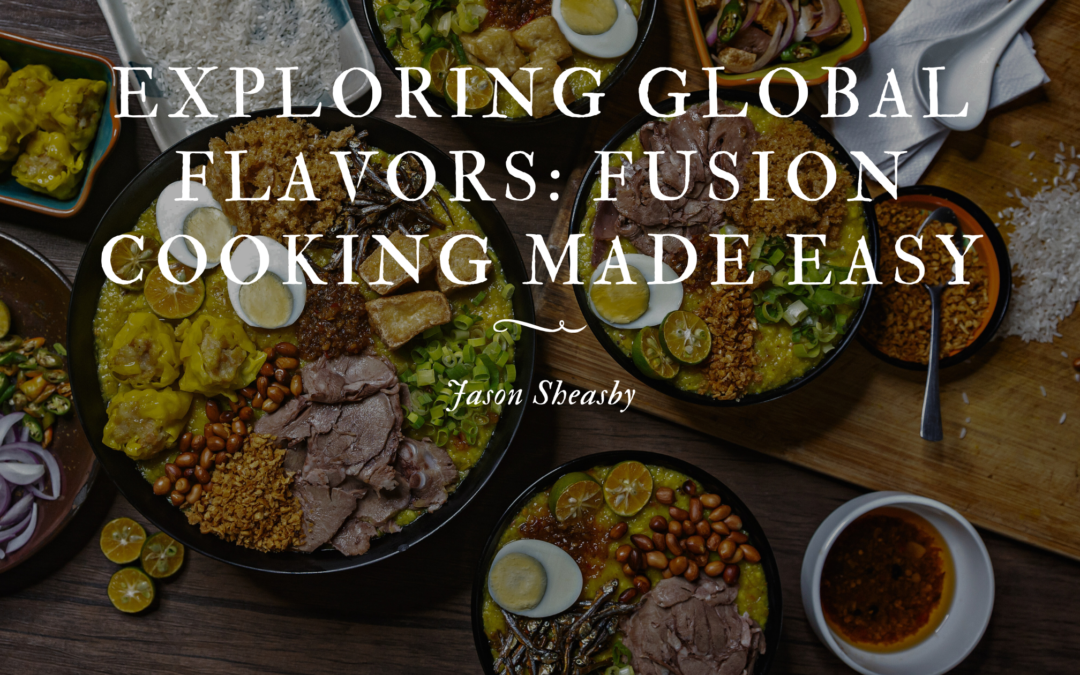Fusion cooking is all about creativity—melding flavors from different culinary traditions to create something entirely new. Whether it’s Mexican-Korean tacos or Indian-Italian pizza, fusion dishes reflect the best of multiple worlds. Here’s how to get started with fusion cooking in your own kitchen.
1. Start with a Flavor Foundation
Fusion cuisine is most successful when it respects the core elements of both cuisines. Start by identifying complementary flavors. For instance:
-
Spicy and Tangy: Thai and Mexican
-
Savory and Bold: Italian and Indian
-
Fresh and Aromatic: Japanese and Mediterranean
Try combining a Thai peanut sauce with Mexican-style grilled chicken or adding curry spices to Italian pasta dishes.
2. Blend Ingredients Thoughtfully
Don’t just mix ingredients for the sake of it—think about how flavors and textures work together. For example:
-
Korean BBQ Tacos: Spicy bulgogi beef, kimchi slaw, and soft corn tortillas
-
Indian Masala Pizza: Naan crust, tikka sauce, mozzarella, and roasted veggies
-
Mediterranean Sushi Rolls: Rice, grilled lamb, tzatziki, and pickled onions
By balancing spice levels and harmonizing textures, you can create dishes that feel cohesive rather than chaotic.
3. Experiment with Techniques
Sometimes, fusion is not just about combining flavors but also techniques. Try using Japanese tempura batter to fry Italian stuffed olives or making tacos using Indian parathas instead of tortillas. The result is a dish that’s both familiar and refreshingly new.
4. Respect Both Cultures
It’s essential to honor the cultures involved by understanding the traditional ways dishes are made. Fusion should not dilute cultural identity but rather celebrate it by combining the best aspects of each cuisine. Researching and appreciating the origins of each dish adds authenticity to your creations.
5. Keep It Simple
Fusion dishes work best when they don’t try to do too much at once. Stick to one or two fusion elements per dish. For instance:
-
Spaghetti Carbonara Ramen: A creamy carbonara sauce over ramen noodles
-
Taco Samosas: Spiced ground beef and cheese wrapped in a crispy samosa shell
-
Sushi Burrito: A large sushi roll packed with Latin-inspired ingredients
6. Presentation Matters
Part of fusion cooking’s appeal is the way it looks on the plate. Use vibrant ingredients and consider plating styles from both cultures. A taco presented like sushi or pasta served with chopsticks can make a visual statement.
7. Try These Easy Fusion Recipes
-
Korean-Mexican Bulgogi Tacos: Marinated beef, kimchi, and sesame slaw in a soft taco shell
-
Thai-Italian Basil Pesto Noodles: Spaghetti with Thai basil pesto and grilled chicken
-
Indian-Spanish Paella Biryani: Saffron-infused rice with tandoori chicken and peas
8. Don’t Be Afraid to Fail
Not every fusion experiment will be a hit, and that’s okay. Keep exploring, tasting, and refining. Start small and adjust as you go, keeping an open mind about what works.
Final Thoughts
Fusion cooking celebrates diversity on a plate. It’s an art that challenges norms while bringing together the best of different culinary traditions. By combining flavors thoughtfully and respectfully, you can craft dishes that are uniquely your own—deliciously unpredictable and always exciting.
Whether you’re blending spicy Mexican heat with creamy Italian pasta or fusing Japanese umami with Mediterranean freshness, the possibilities are endless. So, grab your favorite ingredients, take a culinary risk, and let fusion cooking lead you on a flavorful journey!

